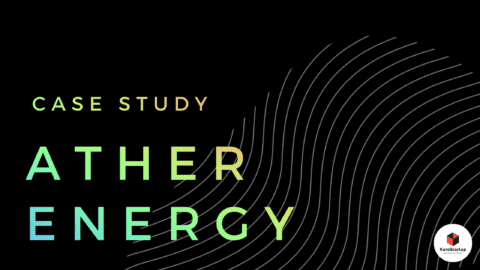The Indian paint industry is booming, thanks to the increasing disposable income and growing demand for home improvement. The decorative paint segment, which includes products applied on walls and furniture, accounts for 75% of the Rs 500 bn market. Two leading players in this segment are Asian Paints and Berger Paints, who have dominated the market for decades. This article aims to compare these two giants based on various parameters to help you decide which one is better suited for your needs.
Company Overview and Market Share
Asian Paints is the largest paint company in India, while Berger Paints ranks second. Both companies manufacture paint products for decorative and industrial use, but their focus is primarily on the decorative segment, which contributes to more than 70% of their total revenue. Asian Paints has a stronger international presence, with 26 manufacturing facilities across the world and operations in 14 countries. Berger Paints, on the other hand, has 20 manufacturing facilities and is present in four countries besides India.
1. Revenue and Growth
In terms of revenue, Asian Paints outperforms Berger Paints. The company’s revenue has grown at a CAGR of 12% over the last five years, while Berger Paints has grown at a CAGR of 11.6%. Asian Paints’ revenue is almost 3.5x that of Berger Paints, mainly due to its head start in the industry and focus on the decorative segment.
2. Operating Margin and Cost Efficiency
Asian Paints has a better track record in cost management, with an average operating margin of 19.6% compared to Berger Paints’ 16.3%. This indicates that Asian Paints is better at controlling costs and maintaining profitability.
3. Research and Development
Both companies understand the importance of technology and invest in Research & Development (R&D) projects to develop alternative raw materials and cost-efficient paint formulations. Asian Paints spent Rs 925 m on R&D in the financial year 2022, while Berger Paints spent Rs 188 m in the financial year 2021.
4. Net Profit and Margin
While Berger Paints has a higher net profit growth rate (12.5% CAGR over the last five years) compared to Asian Paints (8.3% CAGR), Asian Paints has a better net margin (5-year average of 12.5%) compared to Berger Paints (5-year average of 9.6%). However, in the financial year 2022, both companies experienced a decline in net margin due to inflationary pressures.
5. Return on Equity (ROE)
Asian Paints has a higher five-year average ROE (24.2%) compared to Berger Paints (21.8%), indicating that Asian Paints is generating higher returns for shareholders.
6. Dividend Payout
Shareholders of Asian Paints have received a higher average dividend (Rs 13.6) over the last five years compared to Berger Paints (Rs 2.3). Additionally, Asian Paints has a higher five-year average dividend payout ratio (48.7%) compared to Berger Paints (36.3%).
7. Valuation Ratios
Asian Paints shares trade at a higher PE and P/BV multiple than Berger Paints, indicating that Asian Paints shares are trading at a premium compared to Berger Paints. The following table shows the valuation ratios of Asian Paints and Berger Paints for the financial year 2022 and their five-year averages.
| Valuation Ratio | Asian Paints | Berger Paints |
| P/BV (FY22) | 21.1 | 14.7 |
| P/BV (5-year avg.) | 15.8 | 14.5 |
| P/E (FY22) | 95.4 | 69.3 |
| P/E (5-year avg.) | 65.9 | 66.4 |
Future Growth and Opportunities of Paint Industry in India
India’s per capita consumption of paints is much lower than the global average (4.1 kg vs. 13-15 kg in FY2019). With a projected CAGR of 10.4% between 2008 and 2020, the Indian paint industry has seen significant growth. This growth is expected to continue in the future, driven by factors such as increasing urbanization, rising income levels, and a growing construction sector. The decorative paints segment, which includes products applied on walls and furniture, accounts for 75% of the market and is expected to drive much of this growth.
One of the key factors contributing to the growth of the Indian paint industry is the low per capita consumption of paints. At 4.1 kg in FY2019, India’s per capita consumption of paints is much lower than the global average of 13-15 kg. This presents significant growth opportunities for paint companies operating in the Indian market.
Another factor driving the growth of the Indian paint industry is the increasing demand for eco-friendly and sustainable products. Producers are continuously introducing new eco-friendly products, and this trend is expected to continue in the future.
| Parameter | Berger Paints | Asian Paints |
| Company Overview and Market Share | Second-largest in India | Largest in India |
| Revenue and Growth | CAGR of 11.6% | CAGR of 12% |
| Operating Margin | 16.3% | 19.6% |
| Research and Development Spending | Rs 188 million (FY2021) | Rs 925 million (FY2022) |
| Net Profit Growth Rate | 12.5% (5-year CAGR) | 8.3% (5-year CAGR) |
| Net Margin | 9.6% (5-year average) | 12.5% (5-year average) |
| Return on Equity (ROE) | 21.8% (5-year average) | 24.2% (5-year average) |
| Dividend Payout Ratio | 36.3% (5-year average) | 48.7% (5-year average) |
In addition, the COVID-19 pandemic has led to a construction boom in the Asia Pacific region, particularly in China and India. This construction boom is expected to drive the demand for decorative coatings, which offer benefits such as durability, high flexibility, crack-bridging ability, waterproofing & weatherproofing, and resistance to dirt, mildew, and chemicals.

The global decorative coatings market size is projected to grow from USD 82.0 billion in 2022 to USD 98.9 billion by 2027, at a CAGR of 3.8%. The chemicals that are currently used to manufacture coatings are better than solvent-borne coatings. Products are currently sold with multi-year guarantees against corrosion, mostly due to improvements in the performance of coatings.
Decorative coatings can protect the exteriors of the buildings from heavy rainfall, strong wind, and snowfall. These coatings offer several benefits: durability, high flexibility, crack-bridging ability, waterproofing & weatherproofing, and resistance to dirt, mildew, and chemicals. In addition, producers are continuously introducing new eco-friendly products. The improved durability of coatings leads to the painting of window frames and doors less often, thus reducing the costs incurred by the end users. The enhanced scratch resistance allows parquet floors to be renovated less often. Apart from these, their water repellence and hydrophobic nature protect buildings from internal damage, help in maintaining the aesthetic appeal of buildings, and ensure a long life. These properties are increasing the demand for decorative coatings in various construction activities.
Some Related Posts
Wrapping Up
Both Berger and Asian Paints are reputable brands with a long history of delivering high-quality paints. The choice between the two ultimately depends on individual preferences, specific project requirements, and budget considerations. Both brands offer a diverse range of products, ensuring that customers can find the perfect solution for their painting needs.
Before making a decision, it is advisable to visit the respective stores, explore the color options, and consult with experts if needed. Ultimately, whether you choose Berger or Asian Paints, you can rest assured that you are investing in a reliable and trusted brand for enhancing the beauty and durability of your living spaces.
Frequently Asked Questions(FAQs)
What factors should I consider when choosing between Berger and Asian Paints for my home?
Consider factors such as your budget, preferred color range, the specific requirements of your project, and the reputation of each brand for quality and durability.
Which brand has a stronger international presence, Berger or Asian Paints?
Asian Paints has a more extensive international presence, with operations in 14 countries compared to Berger Paints, which is present in four countries besides India.
What is the revenue comparison between Berger and Asian Paints?
Asian Paints outperforms Berger Paints in terms of revenue, with a CAGR of 12% over the last five years, and its revenue is almost 3.5 times that of Berger Paints.
How do Berger and Asian Paints differ in terms of operating margins?
Asian Paints has a better track record in cost management, maintaining an average operating margin of 19.6%, compared to Berger Paints’ 16.3%.
Which brand invests more in Research & Development (R&D) projects?
Asian Paints invests significantly more in R&D, spending Rs 925 million in the financial year 2022, while Berger Paints spent Rs 188 million in the financial year 2021.
What are the key growth opportunities for the paint industry in India?
The growth of the Indian paint industry is driven by factors such as increasing urbanization, rising income levels, and a growing construction sector. The decorative paints segment, covering walls and furniture, accounts for 75% of the market.
How do the net profit growth rates differ between Berger and Asian Paints?
Berger Paints has a higher net profit growth rate (12.5% CAGR over the last five years) compared to Asian Paints (8.3% CAGR).




